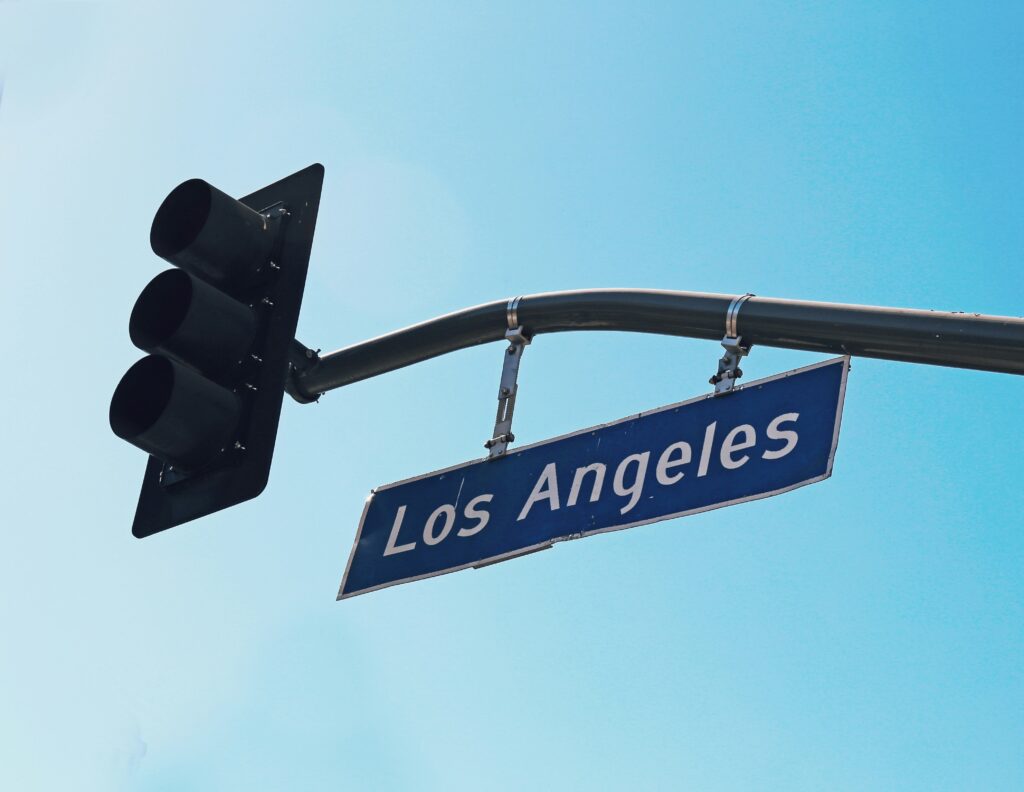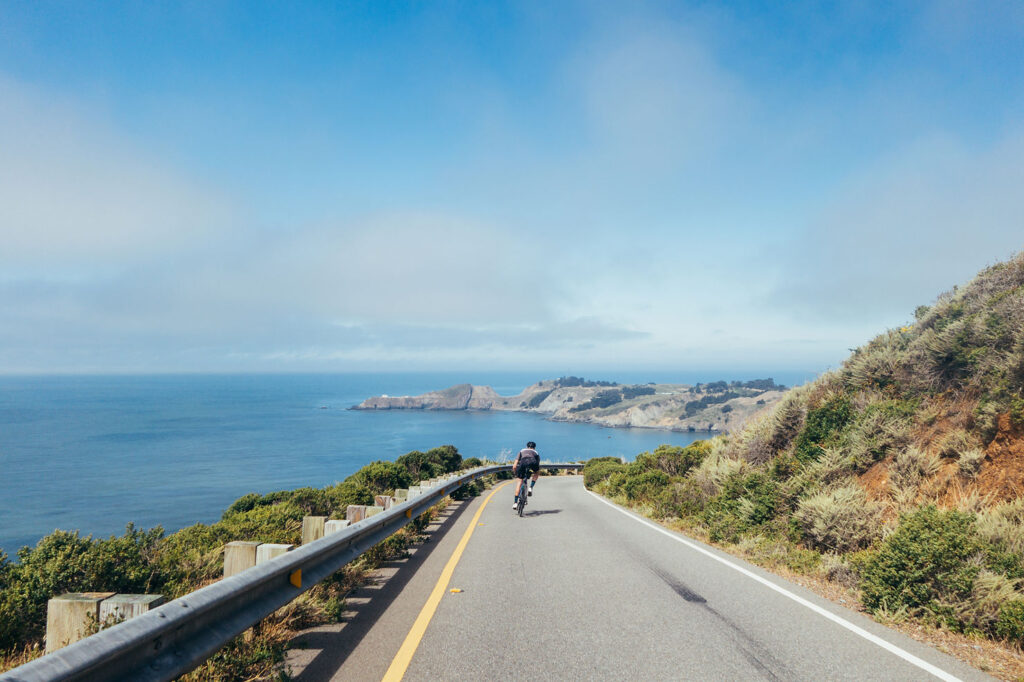Navigating Roadway Hazard Claims: A Step-by-Step Guide for Injured Cyclists in California

Attorneys specializing in dangerous roadway condition bicycle crashes- Lawyers 4 Cyclists
Enhancing Urban Cycling Infrastructure: Steps Los Angeles is Proposing to Keep Cyclists Safer

As the cycling revolution sweeps through cities worldwide, urban planners are increasingly being challenged to create safer, more accessible, and efficient streets that prioritize the needs of cyclists, pedestrians, and public transit users alike. At the forefront of this movement is Los Angeles, a city known for its sprawling highways and infamous traffic jams, now embarking on a bold initiative to reshape its streets for the 21st century. The Supplemental Street Design Guide, developed by the City of Los Angeles in collaboration with its Bureau of Engineering and Department of Transportation, offers a glimpse into the future of urban street design, with a strong emphasis on cycling infrastructure, safety, and sustainability. Photo by tommao wang on Unsplash But what does this document mean for cyclists, road users, and the future of transportation in Los Angeles? Is the city truly prepared to deliver on its promise of safer streets and a more cyclist-friendly environment? Let’s dive deeper and investigate how this guide is shaping the future of cycling in LA, and whether its promises align with the needs of a rapidly changing urban landscape. 1. The Rise of Cycling and the Need for Protected Bikeways The increasing number of bike riders in urban centers is pushing cities like Los Angeles to rethink their approach to street design. The guide identifies the importance of protected bike lanes (Class IV bikeways) as a key solution for promoting safety and encouraging more people to choose cycling as their preferred mode of transportation. What are Protected Bike Lanes? Protected bike lanes are physically separated from motor vehicles and pedestrians, offering cyclists a dedicated space on the road. This separation can be achieved through physical barriers such as curbs, bollards, planters, or even parked cars. The guide emphasizes that Class IV bikeways provide an increased degree of separation between cyclists and adjacent traffic, improving safety by reducing the likelihood of collisions. Protected bike lanes are an essential part of the Bicycle Enhanced Network (BEN), which prioritizes streets for bicycle travel by implementing enhancements like signalization specifically for cyclists. These lanes not only make cycling safer but also create an environment where riders feel comfortable, thus encouraging more people to use bikes for commuting and recreation. Benefits of Protected Bike Lanes 2. Integration of Bike Lanes with Other Infrastructure One of the most challenging aspects of urban bike infrastructure design is the integration of bike lanes with other road users, including pedestrians and public transit. The guide provides several key recommendations on how to manage these interactions effectively, ensuring that cyclists, pedestrians, and transit riders can share space without conflicts. Bikeways and Bus Bulbs The guide introduces a design solution for areas where bike lanes intersect with bus stops, known as bus bulbs. A bus bulb is a sidewalk extension that allows buses to stop without pulling out of traffic, improving transit efficiency. However, integrating these with bike lanes can create conflict points between cyclists and pedestrians boarding or alighting from buses. To mitigate these conflicts, the guide suggests the following measures: These solutions not only improve safety for cyclists and pedestrians but also ensure that buses can operate efficiently, reducing delays caused by buses having to merge back into traffic. 3. Intersection Design for Cyclists Intersections are often the most dangerous parts of the road for cyclists, as this is where they are most likely to interact with turning vehicles and pedestrians. The guide offers several strategies for improving intersection safety for cyclists, particularly through the use of corner radii design and protected intersections. Corner Radii and Cyclist Safety The corner radius is the curve of the curb at an intersection, and it plays a crucial role in determining how quickly vehicles can turn. The guide emphasizes that smaller corner radii force vehicles to make slower turns, which significantly improves safety for cyclists and pedestrians by giving motorists more time to react to other road users. Protected Intersections The guide also recommends the use of protected intersections to further improve cyclist safety. A protected intersection extends the principles of protected bike lanes into the intersection itself, using a combination of raised curbs, bollards, and painted markings to guide cyclists through the intersection while keeping them physically separated from vehicles. Protected intersections offer several advantages: 4. Enhancing Connectivity through the Bicycle Enhanced Network (BEN) The Bicycle Enhanced Network (BEN) is a key concept introduced in the guide, designed to create a citywide network of streets that prioritize bicycle travel. These streets are not just equipped with bike lanes, but also feature enhancements that make cycling more efficient, comfortable, and safer. Key Features of the BEN Creating a Safer and Connected Network The BEN is designed to be a comprehensive network that connects key destinations across the city, including schools, parks, transit hubs, and commercial districts. This ensures that cyclists have safer, dedicated routes for both short trips and longer commutes. By creating a network of streets that prioritize cycling, the BEN encourages more people to use bikes for transportation, reducing reliance on cars and helping to alleviate traffic congestion. 5. Accessibility and Inclusivity in Bikeway Design An often-overlooked aspect of bikeway design is ensuring that it is accessible and inclusive for all users, including those with disabilities. The guide emphasizes the importance of designing bikeways and intersections that comply with the Americans with Disabilities Act (ADA), ensuring that all road users, regardless of ability, can navigate the city safely and comfortably. Accessibility Considerations in Bikeway Design Inclusive Design for All Users By ensuring that bikeways and intersections are accessible to all users, the guide promotes inclusivity and encourages more people to take advantage of cycling as a mode of transportation. This not only benefits cyclists but also creates a more equitable transportation system that serves the needs of
Mastering California Vehicles Codes for Bicycles: Group Ride Etiquette and Safety Tips

Mastering California’s bicycle laws and group ride etiquette is essential for cyclists of all skill levels. By understanding the rules of the road and the intricacies of group ride dynamics, you can ensure a safer and enjoyable cycling experience for yourself and your fellow riders. In this blog post, we’ll delve into the California Vehicles Codes for bicycles, group ride etiquette, and safety tips to help you navigate the Golden State’s roads like a pro. Short Summary Understanding California Vehicle Codes for Bicycles As a cyclist in California, it’s crucial to be aware of the state’s bicycle laws to ensure safety and adherence to traffic regulations. These laws cover various aspects, such as riding on the right side, obeying traffic signals and signs, bicycle equipment requirements, and sidewalk cycling regulations. Not only do these rules apply to solo riders, but they’re also essential during group rides to guarantee the safety of all participants. In the following sections, we’ll provide you with a comprehensive guide on these California Vehicle Codes for bicycles and how they impact group ride etiquette and safety. Keep in mind that your local bike shop can be a valuable resource for learning about these laws and acquiring essential cycling equipment. On the Right Side Riding on the right side of the road is not only a legal requirement in California, but also a crucial aspect of group ride safety and efficiency. Cyclists must ride on the right side of the road, in line with the traffic flow, except when making a legal left turn, passing other cyclists, or riding on a one-way street, road too narrow to share, or when the right side of the road is blocked off for construction or a bike lane is unavailable. During group rides, maintaining the correct position on the road is essential to avoid accidents and ensure a smooth experience for all riders. While riding on the right side, it’s important to be mindful of the group’s pace and keep an appropriate distance from other riders. Advanced group riding skills, such as riding in a pace line or double pace line, can further enhance the efficiency of the entire group and reduce the impact of wind resistance. However, there are exceptions to riding on the right side of the road in certain situations, such as passing, preparing for a left turn, avoiding hazards, or when the lane is too narrow to share. In these instances, it’s crucial to communicate your intentions clearly to the group and move to the left when it’s safer to do so. Following these guidelines will ensure a safer and more enjoyable cycling experience for everyone involved. Obeying Traffic Signals and Signs Obeying traffic signals and signs is essential for cyclists in California, as it guarantees the safety of all road users and helps prevent accidents. Cyclists must comply with all traffic signals and signs, including stop signs, yield signs, and traffic lights, just like any other vehicle on the road. During group rides, it’s particularly important to accommodate slower riders and maintain a safer and inclusive environment for everyone involved. Failing to adhere to traffic signals and signs can result in fines or other penalties, as well as create dangerous situations for both cyclists and motorists. By following the traffic laws, you’ll not only be safeguarding yourself and others, but also promoting a positive image of cyclists in your community. Bicycle Equipment Requirements In California, certain equipment requirements must be met for a safer and legal cycling experience. Cyclists are required to have a white front light and a red rear reflector or light for nighttime use. Additionally, helmets that comply with the American National Standards Institute (ANSI) or the Snell Memorial Foundation standards must be worn by riders under the age of 18. These equipment requirements are not only essential for individual cyclists, but also play a crucial role in group ride safety. The front rider should set a good example by ensuring they have the required equipment and follow the rules of the road. Properly equipped bicycles and adherence to traffic laws contribute to a safer and enjoyable group ride experience for all participants. Sidewalk Cycling Regulations While there is no state-level prohibition against sidewalk cycling in California, it’s essential to check local ordinances in your area for any additional regulations. Cycling on sidewalks can pose risks due to the presence of pedestrians, cars, and other cyclists, so it’s important to be mindful of your surroundings and adhere to the rules of the road when doing so. Experienced riders can provide valuable insights and advice on local cycling regulations and group ride etiquette, so don’t hesitate to ask for guidance from your fellow cyclists or local bike shop. By following the appropriate sidewalk cycling regulations, you’ll ensure a safer experience for yourself and those around you, especially for new riders. Group Ride Etiquette and Safety Now that we’ve covered California’s bicycle laws, let’s dive into the key aspects of group ride etiquette and safety. In the following sections, we’ll discuss communication and signaling, formation and spacing, and sharing the road with motorists. These essential elements will help you navigate most group rides like a pro and create a safer and enjoyable experience for all participants in cycling group rides. Communication and Signaling Clear communication and signaling are vital during group rides to ensure the safety of all participants. Hand signals and verbal cues, such as “car back” or “hole,” allow riders to effectively warn others of potential hazards or changes in direction. Communication is especially important when navigating through intersections or making turns, as riders need to be aware of each other’s intentions and movements. During group rides, the lead rider has a responsibility to monitor the road ahead and alert the group to any obstacles or hazards they encounter. Likewise, tail end riders play a crucial role in calling out approaching vehicles from behind and signaling lane changes when necessary. By using a combination of hand signals
The Golden Rules of the Road

Whether it’s your first ride or you’ve been riding for years, every cyclist wants a safer and enjoyable experience. That’s why it’s so important to master the bicycle laws of the golden state…before you hit the road. In doing so, you’ll help ensure a safer experience for yourself and those around you, while fostering a positive image of cyclists in your community. And what can be more golden than that? The Right Side: Riding on the right side of the road is not only a legal requirement of California, but also a crucial aspect of group ride safety and efficiency. Cyclists must ride on the right side of the road, in line with the traffic flow, with the exception of making a legal left turn, passing other cyclists, riding on a one-way street, when going down a road too narrow to share, or when the right side of the road is blocked off for construction. The Right Equipment: In California, certain equipment requirements must be met for a safer and legal cycling experience. Cyclists are required to have a white front light and a red rear reflector or light for nighttime use. Additionally, helmets that comply with the American National Standards Institute (ANSI) or the Snell Memorial Foundation standards must be worn by riders under the age of 18. Know the Signs: Obeying traffic signals and signs is essential for cyclists in California, as it guarantees the safety of all road users and helps prevent accidents. Cyclists must comply with all traffic signals and signs, including stop signs, yield signs, and traffic lights, just like any other vehicle on the road. During group rides, it’s particularly important to accommodate slower riders and maintain a safer and inclusive environment for everyone involved. Failing to adhere to traffic signals and signs can result in fines or other penalties, as well as create dangerous situations for both cyclists and motorists. Sidewalk Dos and Don’ts: While there is no state-level prohibition against sidewalk cycling in California, it’s essential to check local ordinances in your area for any additional regulations. Cycling on sidewalks can pose risks due to the presence of pedestrians, cars, and other cyclists, so it’s important to be mindful of your surroundings and adhere to the rules of the road when doing so. Common Violations and Penalties: Some of the most common bicycle-related violations in California include riding against the flow of traffic, navigating on the incorrect side of the road, failure to yield, disregarding red lights or stop signs, riding while under the influence, not using lights during night hours, and not wearing a helmet when required. Penalties for these violations can range from a warning to a fine of up to $250. By adhering to traffic laws and practicing safer cycling habits, you can avoid these violations and enjoy a trouble-free ride. Don’t be afraid to ask: Experienced riders can provide valuable insights and advice on local cycling regulations, so don’t hesitate to ask for guidance from your fellow cyclists or local bike shop. By following the golden rules and sharing the road responsibly with motorists, you’ll set yourself up for success and foster a positive cycling community.


